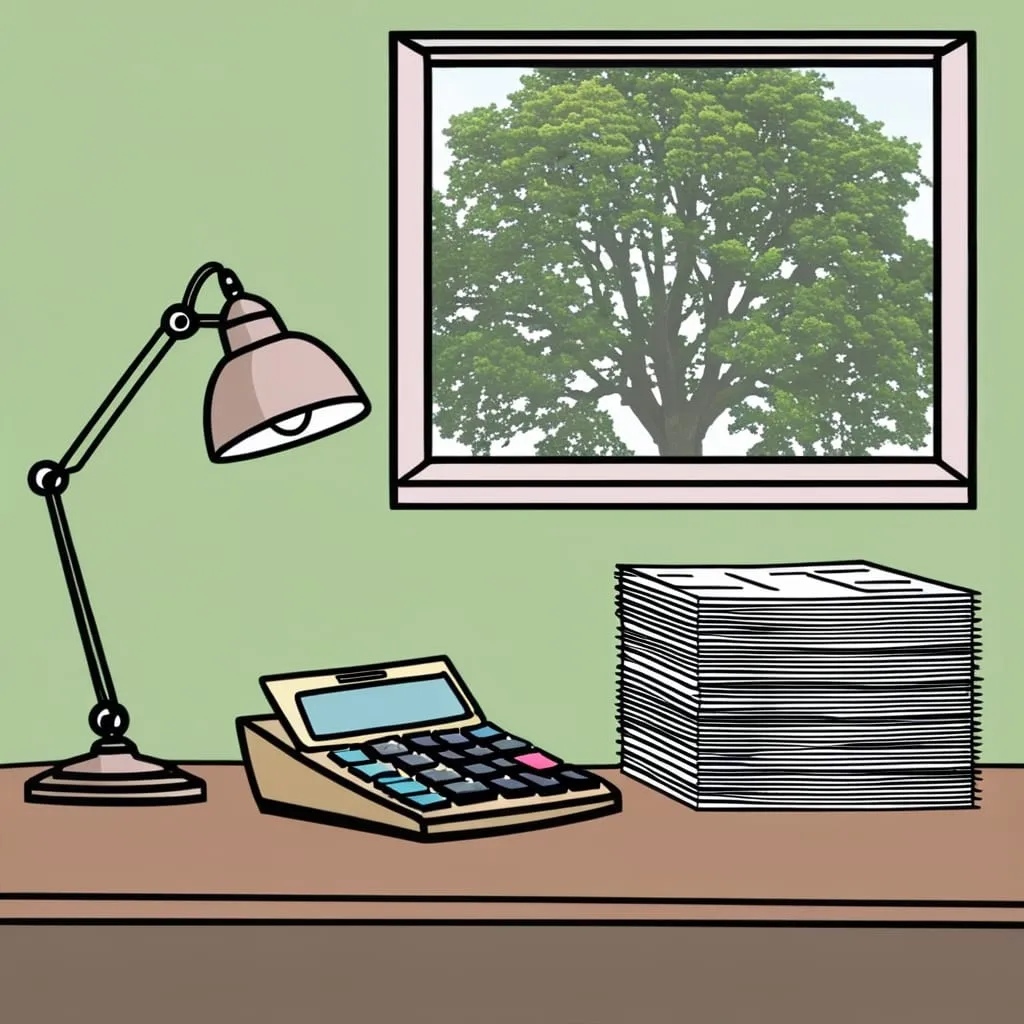The Pomodoro Technique: Your Secret Weapon for Laser Focus and Skyrocketing Productivity
Ever feel like your brain's on a rollercoaster, bouncing between tasks and never quite nailing any of them? Yeah, we've all been there. But what if I told you there's a simple trick that could turn your scattered thoughts into laser-focused productivity? Enter the Pomodoro Technique, your new best friend in the battle against distraction.
So, what's the deal with this funky-named technique? Well, it all started with a tomato. No joke! Back in the late '80s, an Italian student named Francesco Cirillo was struggling to stay focused on his studies. In a moment of desperation (or genius, depending on how you look at it), he grabbed a tomato-shaped kitchen timer and challenged himself to focus for just 25 minutes. And boom - the Pomodoro Technique was born.
Now, you might be thinking, "Great, another productivity hack that'll probably gather dust with my unused gym membership." But hold up - this isn't your average time management trick. The beauty of the Pomodoro Technique lies in its simplicity. It's like interval training for your brain, and trust me, your noggin will thank you for it.
Here's the lowdown on how it works: You pick a task, set a timer for 25 minutes, and go hard until the timer dings. Then, you take a quick 5-minute break to let your brain catch its breath. Rinse and repeat four times, and then treat yourself to a longer break of 15-30 minutes. It's that simple.
But why does it work so darn well? For starters, it plays nice with our brain's natural rhythm. We're not machines (despite what your boss might think), and our brains aren't designed for marathon focus sessions. By breaking work into bite-sized chunks, you're working with your brain instead of against it.
Plus, there's something magical about that timer ticking away. It creates a sense of urgency that kicks procrastination to the curb. Suddenly, checking your ex's Instagram doesn't seem so important when you've only got 25 minutes to nail that report.
Now, I know what you're thinking. "But my work doesn't fit into neat 25-minute boxes!" No worries, my friend. The Pomodoro Technique is flexible. Some folks swear by 50-minute focus sessions with 10-minute breaks. Others prefer mini-Pomodoros of 15 minutes for those days when focusing feels like herding cats. The key is to find your rhythm and stick to it.
Let's talk real-world applications, shall we? Imagine you're tackling your monthly budget. Numbers are swimming before your eyes, and you're one spreadsheet away from face-planting on your keyboard. Enter the Pomodoro Technique. Suddenly, that mountain of figures becomes a series of 25-minute sprints. Before you know it, you're budgeting like a boss, and your bank account is doing a happy dance.
Or maybe you're a student staring down the barrel of a massive exam. Instead of pulling an all-nighter fueled by energy drinks and desperation, you break your study session into Pomodoros. Not only do you retain more info, but you also avoid turning into a zombie the next day. Win-win!
Even in the workplace, the Pomodoro Technique can be a game-changer. Got a big project looming? Break it down into Pomodoro-sized chunks. You'll be amazed at how much you can accomplish when you're not constantly checking your email or getting sucked into the black hole of office gossip.
But let's be real - life has a way of throwing curveballs at our carefully planned Pomodoros. Your coworker wants to chat about last night's game. Your kids need help with homework. Your cat decides your keyboard is the perfect napping spot. So how do you deal?
Communication is key. Let your team know when you're in Pomodoro mode. A simple "I'm in focus mode for the next 25 minutes, catch you after?" can work wonders. For the digital distractions, there are tons of apps and browser extensions that can block those tempting time-wasters during your Pomodoros.
And for those unavoidable interruptions? Be flexible. If you need to pause your Pomodoro, that's okay. The goal isn't to become a productivity robot, but to find a rhythm that works for you.
Now, turning the Pomodoro Technique into a habit takes a bit of effort, but it's worth it. Start small - maybe just a couple of Pomodoros a day. As you get comfortable, ramp it up. Before you know it, you'll be Pomodoro-ing like a pro.
One of the coolest things about the Pomodoro Technique is how it changes your relationship with time. You start to realize just how much you can accomplish in 25 minutes when you're truly focused. It's like finding extra hours in your day that you didn't know existed.
But it's not just about getting more done. The Pomodoro Technique can actually make work more enjoyable. There's something satisfying about ticking off those Pomodoros, like leveling up in a video game. And those regular breaks? They're not just good for your brain - they're a chance to stretch, hydrate, or do a quick victory dance around your living room.
Let's talk about the health benefits, because they're no joke. We all know sitting is the new smoking, right? Well, those Pomodoro breaks are the perfect opportunity to get your blood flowing. A quick stretch, a few jumping jacks, or even a lap around the office can do wonders for your body and mind.
And let's not forget about eye strain. If you're like most of us, you probably spend way too much time staring at screens. Those Pomodoro breaks are the perfect time to give your peepers a rest. Try the 20-20-20 rule: every 20 minutes, look at something 20 feet away for 20 seconds. Your eyes will thank you.
Now, I'm not saying the Pomodoro Technique is a magic bullet. Like any tool, it takes practice to master. You might find yourself itching to check your phone during a Pomodoro, or struggling to get back to work after a break. That's normal. The key is to be patient with yourself and keep at it.
One thing that can help is to prep for your Pomodoros. Before you start, take a minute to clear your workspace, both physically and mentally. Close those unnecessary browser tabs, put your phone on silent, and take a deep breath. It's like setting the stage for a stellar performance.
Another pro tip? Use your Pomodoro breaks wisely. Sure, scrolling through social media might seem tempting, but it's not doing your brain any favors. Instead, try some quick mindfulness exercises, or jot down any ideas that popped up during your focus session. You'll be surprised at how refreshed you feel when you dive back in.
As you get more comfortable with the Pomodoro Technique, you might start noticing patterns in your productivity. Maybe you're a morning Pomodoro person, or perhaps you hit your stride in the afternoon. Use these insights to schedule your most important tasks during your peak Pomodoro times.
And here's a fun twist - try using the Pomodoro Technique for non-work tasks too. Cleaning your house? Pomodoro it. Working on a hobby project? Pomodoro away. You might be surprised at how much more enjoyable these tasks become when you approach them with focused bursts of energy.
Remember, the Pomodoro Technique isn't about turning yourself into a productivity machine. It's about working smarter, not harder. It's about respecting your brain's need for balance between focus and rest. And most importantly, it's about reclaiming your time and attention in a world that's constantly vying for both.
So, are you ready to give the Pomodoro Technique a whirl? Grab a timer (or download a Pomodoro app - there are tons out there), pick a task, and dive in. You might just find that these little tomato-sized chunks of time are the secret ingredient to a more focused, productive, and balanced life.
Who knew a simple kitchen timer could pack such a punch? So go on, give it a try. Your future, super-productive self will thank you. And hey, even if it doesn't turn you into a productivity ninja overnight, at least you'll have a newfound appreciation for tomatoes. Now, if you'll excuse me, my Pomodoro timer just went off. Time for a well-deserved break!






